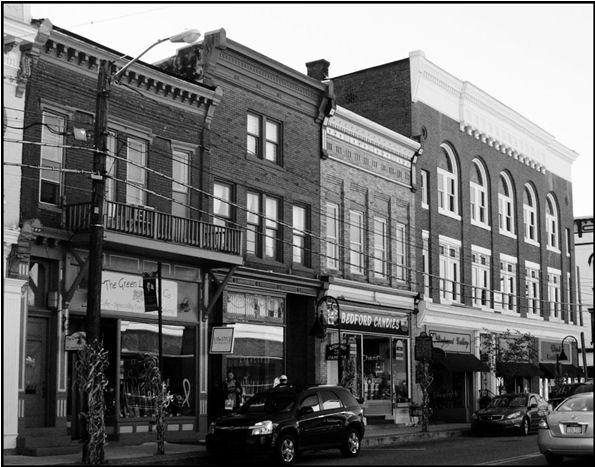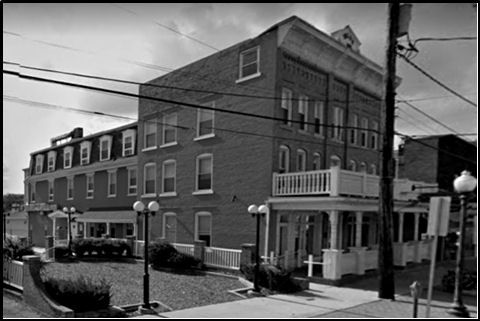



![]() The Italianate style was popular from circa 1840 to circa 1885. It was actually one of a number of styles commonly referred to as 'Picturesque styles.'
The Italianate style was popular from circa 1840 to circa 1885. It was actually one of a number of styles commonly referred to as 'Picturesque styles.'
![]() While the Italianate style was employed for a few private residences, it was very much favored by businesses.
While the Italianate style was employed for a few private residences, it was very much favored by businesses.
![]() The Italianate style emphasized the roofline rather than the entry, which was perfect for businesses that required first floor storefronts.
The Italianate style emphasized the roofline rather than the entry, which was perfect for businesses that required first floor storefronts.
![]() The primary identifying features of the Italianate style were low-pitched roofs with overhanging eaves and large decorative 'C' and 'S' shaped brackets either single or in pairs at even distances apart to look as if they are supporting the roof, tall, narrow and usually arch-topped windows that may be paired with bay windows, single-storey small porches supported by slender square columns often with beveled corners.
The primary identifying features of the Italianate style were low-pitched roofs with overhanging eaves and large decorative 'C' and 'S' shaped brackets either single or in pairs at even distances apart to look as if they are supporting the roof, tall, narrow and usually arch-topped windows that may be paired with bay windows, single-storey small porches supported by slender square columns often with beveled corners.
![]() Private residences often had a cupola on the roof, providing ventilation for the house. The cupola was often called a 'widow's walk' by the tradition that wives of seamen would wait for their husbands to return from voyages by sitting, or pacing, in the cupola. While that tradition might have been true for houses near the sea, it makes little sense for landlocked places such as Bedford Borough.
Private residences often had a cupola on the roof, providing ventilation for the house. The cupola was often called a 'widow's walk' by the tradition that wives of seamen would wait for their husbands to return from voyages by sitting, or pacing, in the cupola. While that tradition might have been true for houses near the sea, it makes little sense for landlocked places such as Bedford Borough.
![]() The Italianate style is exemplified by the Barclay Mansion at the northwest corner of the intersection of Juliana and John Streets in Bedford Borough (not shown here) and by various commercial buildings in the main shopping district.
The Italianate style is exemplified by the Barclay Mansion at the northwest corner of the intersection of Juliana and John Streets in Bedford Borough (not shown here) and by various commercial buildings in the main shopping district.
![]() The Italianate style is exemplified by the Union Hotel at 128 E. Main Street in Everett Borough.
The Italianate style is exemplified by the Union Hotel at 128 E. Main Street in Everett Borough.
